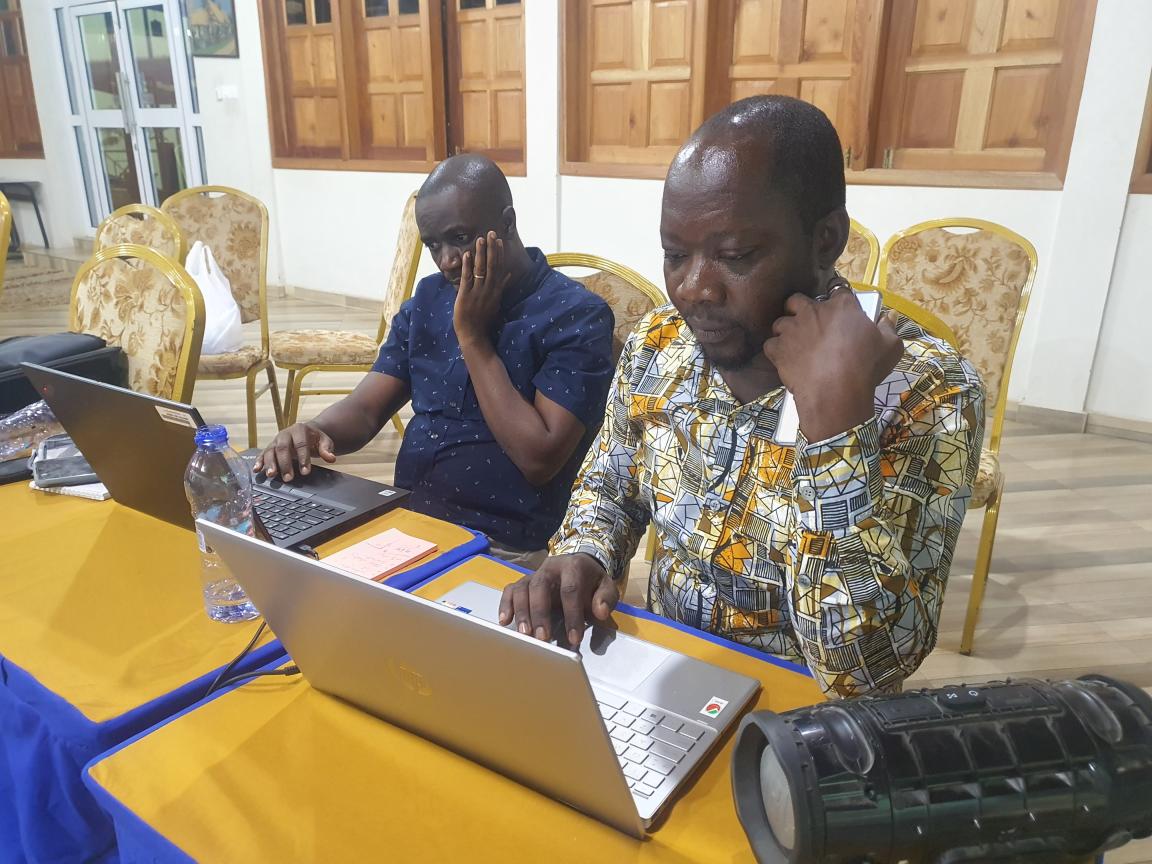The Surveillance Outbreak Response and Analysis System (SORMAS) is an electronic tool for integrated disease surveillance and response (IDSR) with an added capability for outbreak management and contact tracing. [1] SORMAS allows for real-time monitoring of disease outbreaks and facilitates collaboration among different departments and actors involved in the response to any disease outbreak. SORMAS has been adapted as the electronic IDSR system for Ghana and helps keep watch over 44 notifiable diseases, including COVID-19—and the system has been instrumental in Ghana's fight against COVID-19 and other infectious diseases.

Other systems do not currently feed into SORMAS directly, although information or alerts from those systems are used as a basis for identifying a suspected case of a priority disease and which is then captured in SORMAS. For example, if a patient whose information is captured on LHIMS (Lightwave Health Information Management System), an EMR (electronic medical record), presents signs and symptoms that meet the case definition for measles, the information does not go into SORMAS directly—the alert comes as an email to the Disease Surveillance Department, where they will assign a district disease control officer to the patient for further investigation. During this investigation, the information is captured into SORMAS. This could be developed seamlessly with an interoperability layer in place between the LHIMS and SORMAS.
SORMAS is therefore a crucial element in Ghana’s disease surveillance and response system—but the hosting and management of the system has caused a few concerns. Currently, the responsibility of developing, hosting, and managing SORMAS is entrusted to a third-party IT (information technology) company to ensure seamless operation of the system and access to expertise of specialized IT professionals. This initial arrangement has allowed the Ghana Health Service (GHS) to focus on responding to outbreaks and refining SORMAS’s functionalities while the IT organization handles the technical aspects of development, hosting, infrastructure management, security, and ongoing system maintenance.
The potential issues and concerns with this hosting and management arrangement include data security and privacy, sustainability, dependency on the third-party organization, alignment with specific requirements and regulatory frameworks, cost considerations, and a desire for in-house technical expertise within GHS. Addressing these concerns requires clarification of roles and responsibilities within GHS, undertaking measures to ensure compliance, and exploring possibilities for greater ownership of the system by GHS.
The planned transfer of SORMAS ownership to GHS will require preparing the workforce, optimizing resources, and aligning staff for effective management and operation. To inform this crucial shift, CHISU supported GHS to conduct several foundational assessments, including a human resources (HR) capacity needs assessment. The HR assessment aimed to identify capacity gaps or areas in need of improvement within GHS for the management of SORMAS and to recommend strategies to address them.
The HR assessment helps ensure a smooth and successful transition by:
- Helping identify skill gaps in the current workforce related to SORMAS operations. By evaluating the skills and qualifications of staff, GHS can determine the necessary steps to bridge the identified technical capacity gaps effectively.
- Identifying training and capacity-building needs of the workforce that would be involved in maintaining and operating SORMAS. This allows GHS to develop targeted training programs that enhance the technical competencies of current staff. By investing in training, GHS is assured that the workforce will be equipped with the knowledge, skills, and competencies needed to handle their responsibilities during and after the transition. Engagement during the assessment also helped GHS understand the roles and responsibilities of the personnel involved in SORMAS operations—and helped them identify key individuals who can contribute to a smooth transition.
- Facilitating an evidence-based approach to optimize resource allocation or ensure resource allocative efficiency. This will ensure assigning qualified, available GHS staff in the area of hosting, maintenance, and extension of the SORMAS platform, and that GHS assigns the appropriate individuals with the requisite skills to specific roles. If necessary skills are lacking, recruitment efforts are initiated, fostering sustainability and efficiency as well as reducing reliance on external supervision and support.
The assessment revealed that GHS possesses a skilled and sizable relevant information communication technology (ICT) workforce across hierarchical levels that is capable of supporting and maintaining the SORMAS platform during the transition from the current third-party IT organization. GHS has a significant number of ICT professionals within its Public Health Division, ICT Department, Centre for Health Information Management (CHIM), and Regional Health Directorates, who can be trained and mentored to effectively manage SORMAS in a relatively short period. These ICT professionals currently provide technical and management support for other existing health information systems (such as DHIMS2)—demonstrating their capacity to extend similar support to SORMAS. Also, GHS has well-established processes for providing technical support to users, involving regional ICT managers, the National SORMAS Support Team, and the third party IT organization for escalated issues.
For the effective and efficient management of SORMAS, the HR assessment recommended that the GHS have (at minimum) an IT Project Manager, System Administrator, Senior Software Engineer, Junior Software Developers, Help Desk, Infrastructure engineer, and a cybersecurity expert.
The HR assessment is a critical step in an evidence-based approach to planning the successful transition of SORMAS ownership to GHS. By conducting a thorough evaluation of the human resources landscape, including skills, capabilities, and potential challenges, the HR assessment provides essential information for designing a customized transition plan—setting the stage for an effective transition of SORMAS ownership to GHS.
_____________
[1] IDSR is a technical guideline developed by the World Health Organization (WHO) that explicitly describes what needs to be established at each level of the health system in WHO African Region (AFRO) in order to detect and respond to diseases, conditions, and public health events that are responsible for all preventable illnesses, deaths, and disabilities in local communities. The guidelines recommend thresholds for action on priority diseases, public health events, and conditions and for responding to alerts. The main goal of IDSR is to strengthen the capacity of countries to detect, monitor, and respond to priority diseases and public health events.